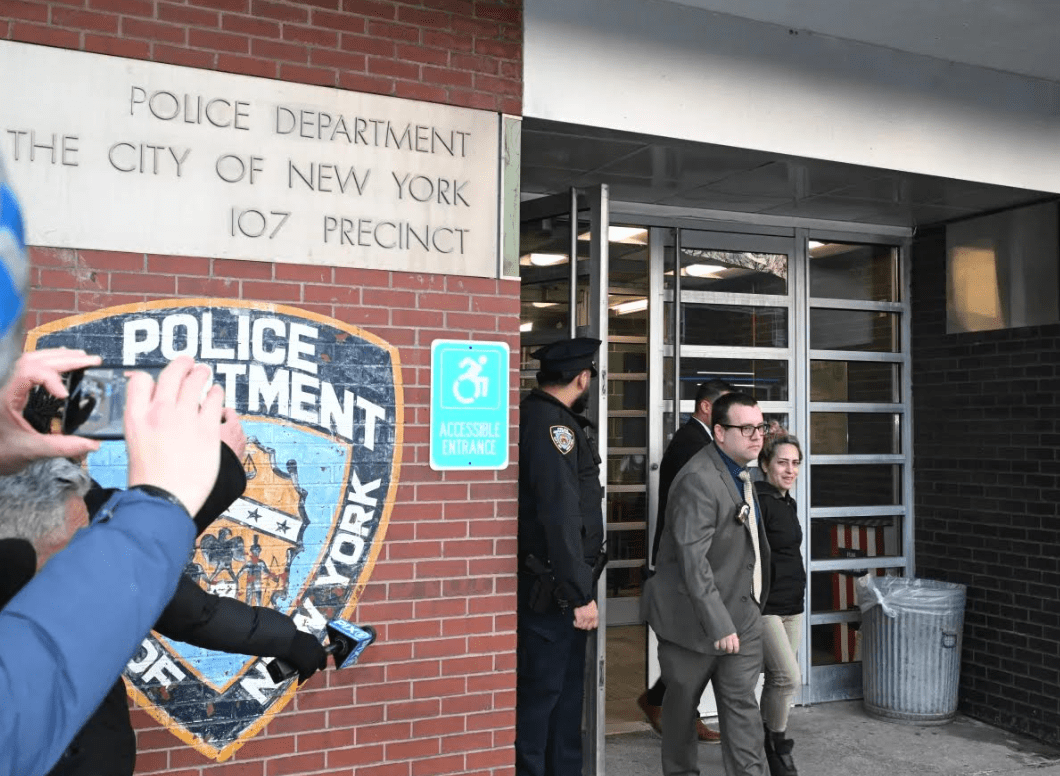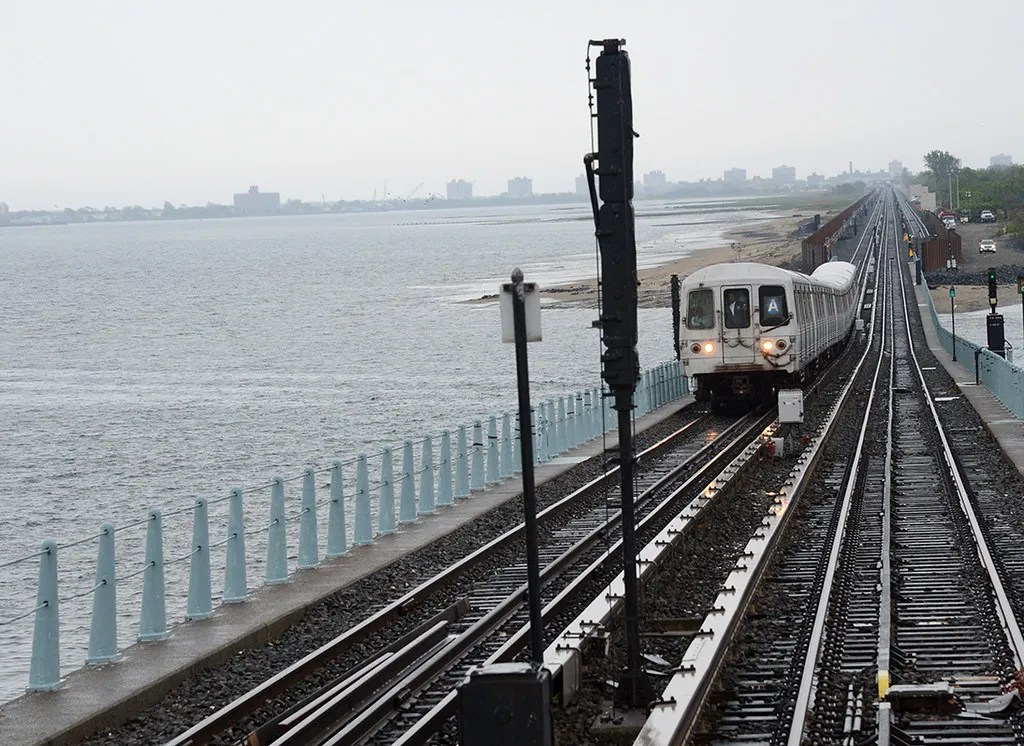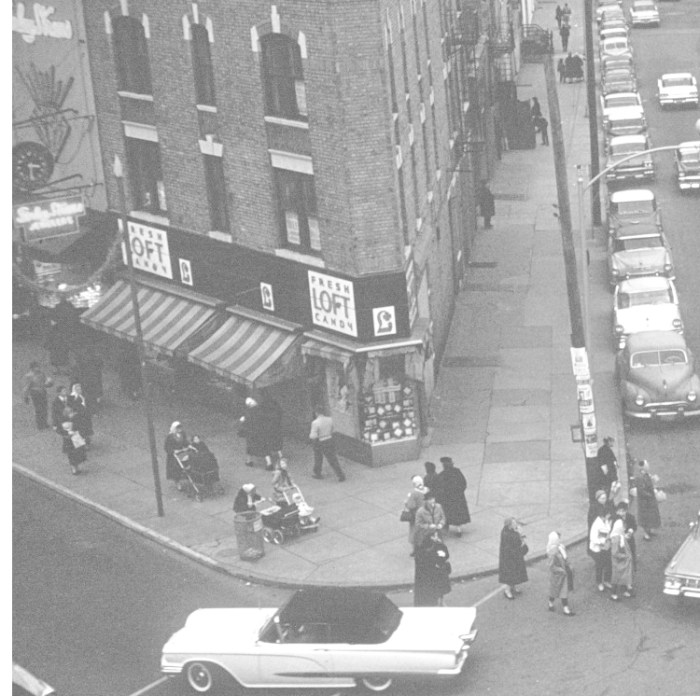
BY LINCOLN ANDERSON | No, admittedly, it’s not a full-service hospital to replace the former St. Vincent’s. Nonetheless, the Lenox Hill HealthPlex will definitely be a major new medical presence on the Lower West Side.
And it’s rapidly taking shape in the former St. Vincent’s O’Toole Building, at W. 12th St. and Seventh Ave. Most notably, the $150 million project will include a 30,000-square-foot, state-of-the-art emergency department, slated to open by the end of June. It will be Manhattan’s first freestanding E.D. — as in, not physically connected to a hospital.
Last week, top officials from the new facility gave The Villager a tour of the whole 160,000-square-foot building. They included John Gupta, the HealthPlex’s executive director; Dr. Eric Cruzen, the emergency department’s medical director; Alex Hellinger, the facility’s associate executive director; and Terry Lynam, vice president of public relations for North Shore-LIJ Health System, the HealthPlex’s parent company.
Construction workers were all around, going up and down on beeping lifts, using loudly whirring electrical saws, chipping off excess concrete with a long pole. Construction dust from all the work filled the air.
Everyone on the tour donned neon-green safety vests, hard hats and protective plastic glasses. The visit started with an elevator ride to the top and worked its way down the stairs. As Gupta explained, while standing on the roof, the building, constructed in 1964 by the National Maritime Union, was designed by architect Albert Ledner to resemble a ship. Thus, the round top of the shaft for a former elevator that serviced the union conference room on the setback sixth floor, sticks up on the roof to resemble a ship smokestack. The building widens as it rises, again, like a ship does. The glass-block wall that rings the first floor is supposed to evoke water upon which “the ship” is floating. Also adding to the structure’s nautical motif are the distinctive, scalloped, porthole-style windows higher up on the facade.
However, while the tour went from top to bottom, it makes sense to skip floors six through two, for now, and jump down to the first floor. That’s because the emergency department will be located there, and that’s where most of the action will be occurring.
E.D. on Seventh Ave.
The emergency department’s main entrance will be on Seventh Ave. If a walk-in patient has a serious condition, he or she will walk straight through to the main emergency center. For less-serious problems — if, for instance, only some sutures are needed — walk-ins will go to the left or right, where there are waiting areas and exam rooms where they’ll receive treatment.
The E.D. will feature 26, private, state-of-the-art, critical-care rooms.
“They have every piece of technology you’d see in an E.R.,” stated Cruzen, who is friendly and smiles readily.
There will also be “telemedicine” devices in each room, he added, which will allow the staff to “beam specialists in” to help treat patients.
Although the rooms are intended for one patient each, they are fitted with two medical-gas outlets, so they can each be doubled-up with two patients in the event of a disaster.
“We want to be prepared,” he said.
Beyond urgent care
More than a few local residents, still anguished about the loss of St. Vincent’s, have dismissed the HealthPlex emergency department as just an “urgent-care center on steroids.” After all, people who are suffering heart attacks, need cardiac catheterization or bypass surgery or neurosurgery or have open fractures or major head trauma — not to mention gunshot wounds — won’t be dropped off here by paramedics and E.M.T.’s, but rather will be taken to an emergency room connected to a full-service hospital.
However, the HealthPlex E.D. will offer advanced life-support services, so that patients with acute conditions — suffering heart attacks or strokes or with major trauma — if needed, can be treated and stabilized here and then transported.
It’s expected the E.D. will see 45,000 patients annually. The range of illnesses and injuries it is prepared to treat includes, but is not limited to, chest pain and other cardiac symptoms, early-onset stroke, shortness of breath, respiratory illnesses (asthma, pneumonia, chronic bronchitis and emphysema), concussions, fractures and joint injuries, motor vehicle injuries, severe cuts and burns, abdominal pain, allergic reactions, gastrointestinal illnesses, influenza (flu), occupational injuries, sports injuries and behavioral health issues.

‘Infinitely different’
In short, Cruzen said, this E.D. will be “infinitely different than an urgent care.”
For example, it will offer board-certified emergency physicians and nurses, plus a “128-slice” CAT scan, X-rays and ultrasound. It will be open 24/7 and staffed by 100 people — with 30 to 60 staff on duty depending on the time of day. The E.D. will be a receiver for the city’s 911 system. And it will be certified by the New York State Department of Health as an emergency center.
Meanwhile, most urgent-care centers might have only four treatment rooms maximum, he added. They also aren’t required to treat people without insurance, while the HealthPlex is required to do so.
“We’re not just another City MD,” Cruzen stressed, referring to one of the current urgent-care operations out there. “We’re doing a whole different service.”
For example, the high-tech, CAT scan machine costs $1 million, Cruzen said, and could be used to assess stroke patients.
“It’s so advanced,” he said, “it can scan your entire body in two breaths.”
They are applying for the E.D. to be a certified stroke center.
‘More like a spa’
Beyond its capabilities, a major theme of the new emergency center will be customer service. For example, staff soon will be trained on interacting with patients on the CAT scan by first using a robotic talking mannequin on it.
“It’s an idea to totally redo customer service that’s more like a spa than an E.R. — like the Ritz-Carlton,” Cruzen explained with a smile. “We’re re-envisioning the way people are treated in an emergency department.”
In a traditional E.R. layout, the nurses’ station is in the middle of the room. Here, the patients will be in the center, in 12 cubicles which will sport La-Z-Boy-style recliners and TV screens.
“We want it to be like a spa,” Cruzen reiterated. “We didn’t want it to be focused on the doctors and nurses. The center of the room is now centered on the patients.”
There will be “bedside” computer monitors, and all information will be taken down electronically on them, which will quickly provide data on drug interactions and the like, the doctor added.
Ambulances on W. 12th
The building’s W. 12th St. side is dominated by the E.D. ambulance bay, which has two special “resuscitation rooms” attached to it. Medical equipment and large movable lights in these two rooms will hang down from the ceiling, and they will be like any top-notch emergency operating room.
Two HealthPlex ambulances will be based here to transport any patients to hospitals who require more intensive care or a hospital stay.
In general, paramedics and E.M.T.’s have protocols for where to take various types of patients, so they won’t be dropping people off at the HealthPlex in the first place if they need a higher level of care, Cruzen noted.
Mostly treat-and-release
In fact, they expect that more than 90 percent of the patients they treat will be released without needing hospitalization.
“There are 400 of these around the country, and they’ve been around for 20 years,” Cruzen said of the stand-alone E.D.’s. Studies have shown that only about 6 to 8 percent of patients at this sort of facility will need to be admitted to a hospital.
Disaster response
A doorway at the ambulance bay’s west end leads to a full decontamination center, which Cruzen noted, could come into use during a mass casualty, if people are exposed to chemicals, radiation or “any toxin.” It has a giant shower that can be used by one or two people at a time. In addition, they will have large tents that can be set up outside where more people could be decontaminated.
Although not designated as a trauma center, Cruzen said the HealthPlex will be prepared do whatever it can in the event of a major catastrophe — which, again, sets it apart from an urgent-care center.
In terms of how many patients the first-floor E.D. could handle at one time during a crisis, he stated, “I would say 75 to 100 would be our surge capacity. If another 9/11 happened, we’d have people in the halls — whatever we needed to do. In an emergency, we could shut down the rest of the building — the comprehensive care center — and use it for crisis.”
Two emergency generators have now been installed for the building and there is a connection to allow a third to be hooked up outside. So the E.D. could keep running during a blackout.
“We’re required by law to operate without external resources for 96 hours,” the medical director noted.
How about longer? Not a problem, Gupta said, since North Shore-LIJ could bring in resources.
“That’s the benefit of being part of this large health system,” he noted. “Any disaster we’ll be able to accommodate.”
Sexual-assault forensics
Another doorway, at the ambulance bay’s east end, is a dedicated entrance for sexual-assault victims.
“We’re going to be a center of excellence for forensic examination of sexual assault,” Cruzen said.
Here, evidence will be collected for prosecution purposes against the perpetrators.
“Unfortunately, St. Vincent’s used to have a large volume of sexual-assault cases,” he said, “which is why we decided to apply to the state for the designation.”
This area will have a comfortable, living room-like space to try to put the victims at ease and also a bureau of clothes they can wear, if their own clothes are taken for evidence.
“Usually, they don’t want anything to do with the clothes they were wearing anyway,” Cruzen noted.
Psychiatric to bariatric
Farther inside the E.D., there will also be two behavioral-health isolation rooms for people who are in emotional distress, drunk or violent. The idea is to allow these individuals to calm down here, and remove them from the rest of the population in the E.D. waiting area. There are no gas nozzles or other things in these rooms that people could hurt themselves with.
“They wouldn’t be locked in there — it’s not a prison,” Cruzen said. “But they can relax in there.”
In addition, there is a “bariatric room,” with an extra-wide doorway so obese patients over 350 pounds can fit inside.
Seven of the critical-care rooms have a glass-block wall, letting in natural light, which Cruzen noted, is always a plus in New York, and has been shown to improve health.
All fresh staff
In terms of the doctors and nurses, Cruzen said, “It’s all fresh staff, specifically selected for this place.”
In other words, they didn’t just pull personnel from other North Shore-LIJ hospitals and facilities, but each individual applied and was interviewed. Several of the nurses and staff formerly worked at St. Vincent’s, according to Cruzen.
“We’ve had five recruitment fairs so far,” he said. “We’re almost done. We’ve really got some incredible people. I think the community’s going to be very pleased when we open.”

Comprehensive Care center
Above the E.D., the HealthPlex will feature a comprehensive care center, which will open at a later date. This will have a separate entrance on W. 13th St., where two elevators will take patients up to the building’s second through fifth floors.
“If you’re coming in for an imaging test or a mammogram at the comprehensive care center, there’s no reason for you to be walking through the emergency department,” explained Gupta.
Imaging services
The fifth floor, currently a large, gutted, open space with many thin columns, will eventually be developed as an imaging center — for X-rays, CAT scans and M.R.I.’s — Gupta explained.
Over the years, the subway running underneath “vertically magnetized” the building, and this magnetization then spread horizontally, the executive director noted. As a result, they had to replace all the building’s iron with nonferrous metal and add shielding so the sensitive imaging machines’ measurements won’t be affected.
Ambulatory surgery
The fourth floor, also currently just a raw space, will be developed with six operating rooms and two procedure rooms for ambulatory surgery. Types of surgery offered will include orthopedic — fixing broken bones and fractures — plus “scoping” for joints, and even some spinal procedures, Hellinger said.
The surgeries performed will be “safe, nothing out of the ordinary,” Gupta said.
Because the building cantilevers out as it rises, the third floor is a so-called “interstitial space,” featuring massive, load-bearing, steel support beams, but no other uses.
Half of the second floor is taken up by new mechanical systems for the emergency department below. There will also be some physicians’ offices and patient rehab services on this floor.
L.G.B.T Center ties
At one point, Gupta stepped out onto a small balcony behind the HealthPlex that faced the rear of the L.G.B.T. Center, on W. 13th St.
“They’ve been phenomenal neighbors to us during this process,” he said of the construction work. “We’ve been trying to minimize disruption to the neighborhood.”
The executive director, who brims with enthusiasm, added that the HealthPlex and the L.G.B.T. Center “match up very well,” in terms of their missions regarding care. Cruzen sits on the board of the New York City AIDS Foundation.
In fact, the HealthPlex has made an agreement with the L.G.B.T. Center that, if anyone at the latter needs to go to the E.D., he or she can discretely be admitted through the 13th St. entrance, which has a set of doors leading into the E.D., rather than walking around to the Seventh Ave. side. The L.G.B.T. Center does offer mental-health services, the HealthPlex officials noted, and previously had a similar arrangement with St. Vincent’s.
Cruzen said the E.D. will have board-certified E.R. psychiatrists — plus, again, one can always be patched in via telemedicine.
Saving seamen’s room
The former O’Toole Building is part of the Greenwich Village Historic District, and so its exterior is landmarked, but — like most New York City landmarked buildings — it is not an interior landmark. Even so, the former union conference room on the sixth floor, which will be used as a meeting room, is being sensitively restored. The handsome, pressed-wood, circular table that rings the room is being preserved.
Not a hospital
Gupta won’t be on site all the time, since he also runs the Manhattan Eye, Ear and Throat Hospital on the Upper East Side. But Cruzen and Hellinger will be based at the HealthPlex.
Asked if the HealthPlex could someday be expanded into a full-service hospital, Gupta responded, “This is not being designed and built to be an inpatient hospital, but designed to be the latest and greatest in ambulatory care and emergency services.”
How about the comment made by one Villager reader, who charged that a recent headline in the paper about the HealthPlex E.D. was inaccurate for calling it an E.R.? The reader claimed an E.R. must technically have a certain number of hospital beds connected to it. Not so, according to Cruzen and Gupta: An E.R., by definition, doesn’t need to be connected to hospital beds, they said.
“It is an E.R… . It is an E.D.,” Gupta asserted.
The main reason the term “‘E.R.’ is frowned on,” they said, is because, technically, it won’t be “one room,” like, say, Bellevue Hospital’s E.R., where the patient areas are sectioned off only with curtains. Here, patients will each have their own critical-care rooms. Thus, “E.D.,” as in “department,” is the term they prefer.



































